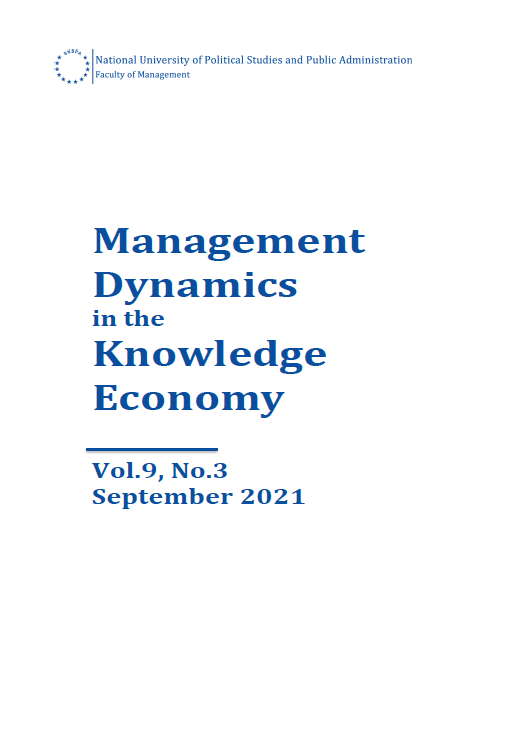Workers' Satisfaction with Grievance-Handling Procedure: A Study on the Selected Garment Factories in Bangladesh
Workers' Satisfaction with Grievance-Handling Procedure: A Study on the Selected Garment Factories in Bangladesh
Author(s): Serena Aktar, Md. Mahbub ul AlamSubject(s): National Economy, Human Resources in Economy, Socio-Economic Research
Published by: Facultatea de Management – Scoala Nationala de Studii Politice si Administrative (SNSPA)
Keywords: Grievance management; garments industry; grievance; structural features; worker’s satisfaction; labor union
Summary/Abstract: Employees are the most important asset in the organization. There should always be a good relationship between employer and employee. If employees are happy in the organization, then the organization can move towards success. Satisfaction towards grievance handling procedure is important in this regard since one of the most important consequences of mishandling of grievances is labor unrest. An employee’s grievance can be over the wage and salary, working hours, condition of work premises, employment conditions, etc. Keeping the views in mind, this study was conducted to examine the level of satisfaction towards different dimensions of grievance handling procedure and its influence on overall satisfaction among workers in some selected factories in the Readymade Garments (RMG) sector in Bangladesh. Data was collected using the Grievance Handling Procedure Questionnaire. A total of 284 garment workers from different garment factories located in Dhaka, Gazipur, and Narayanganj took part in the survey. Measures of central tendency, dispersion, and association have been used as part of descriptive statistics while multiple linear regression analysis has been used to identify significant predictors of turnover intention. The results indicated that four dimensions of grievance handling procedure, i.e., a decision given, time taken for solving grievance, follow up mechanism, and attitude of supervisors significantly predict workers’ overall satisfaction. However, structural features of the grievance procedure were found statistically insignificant. Finally, it was concluded that if managers and supervisors are well trained and workers’ grievances are handled effectively, they will be encouraged, assured, and will have positive feelings towards their organization and this would increase their overall satisfaction and, thereby, productivity.
Journal: Management Dynamics in the Knowledge Economy
- Issue Year: 9/2021
- Issue No: 3
- Page Range: 345-362
- Page Count: 18
- Language: English

